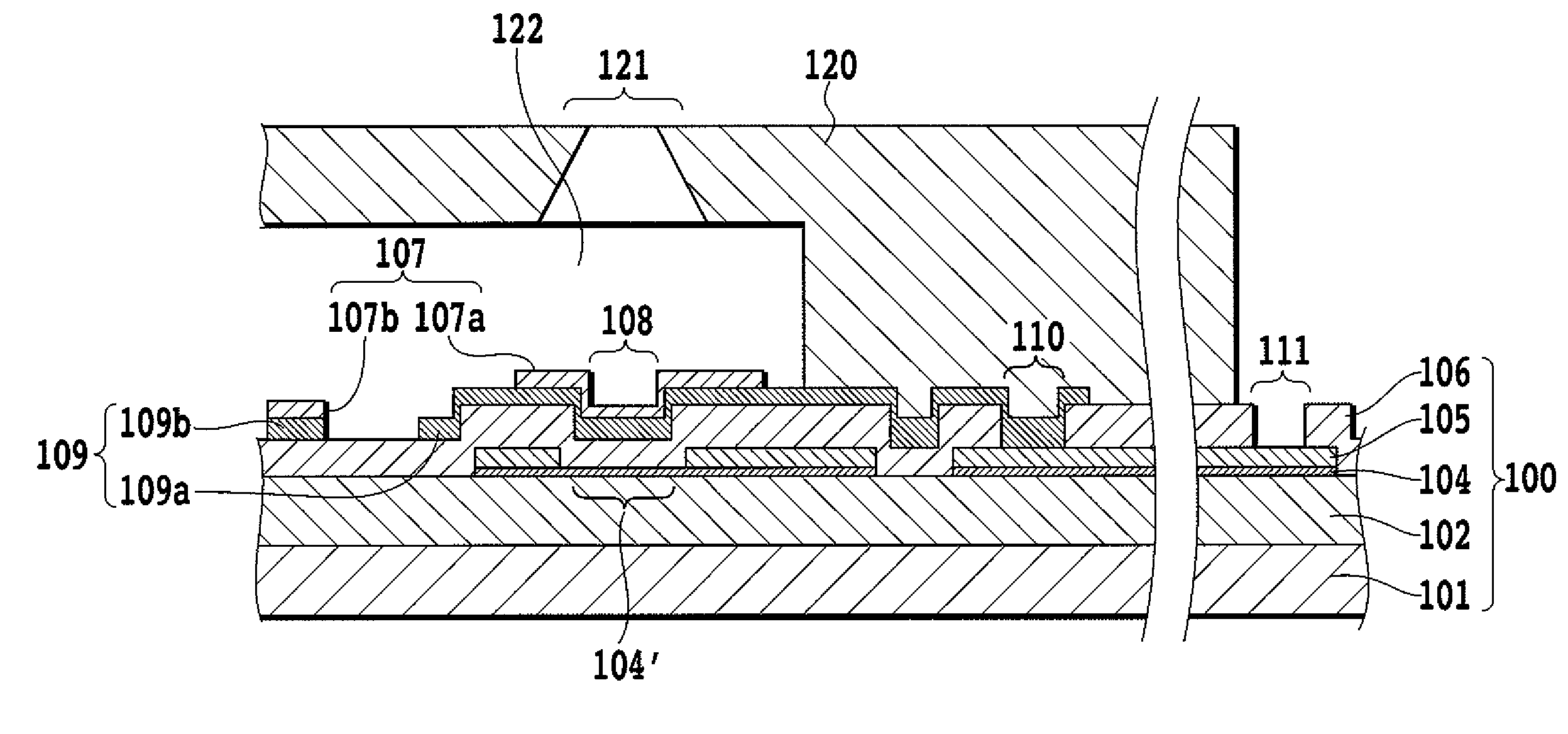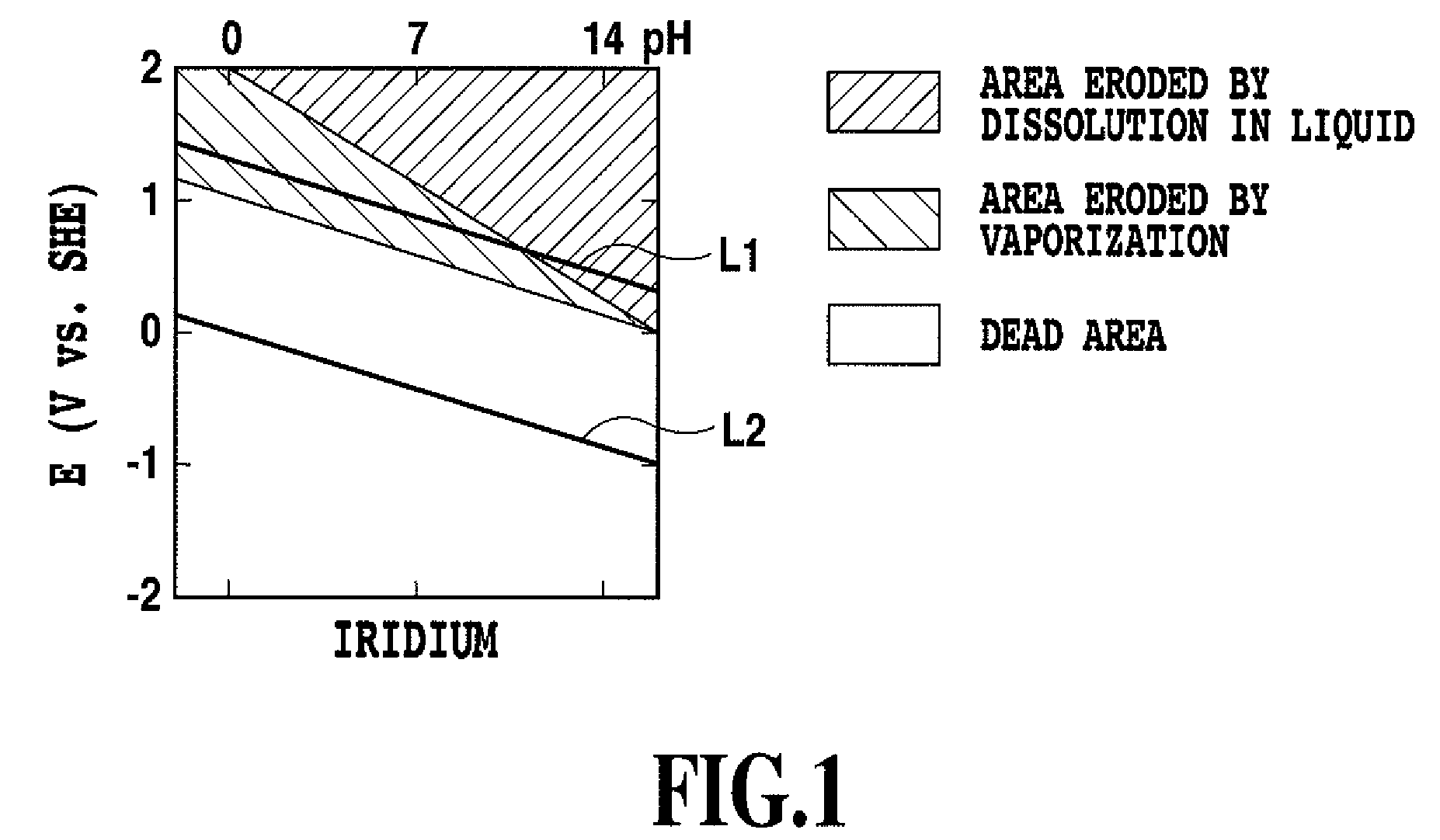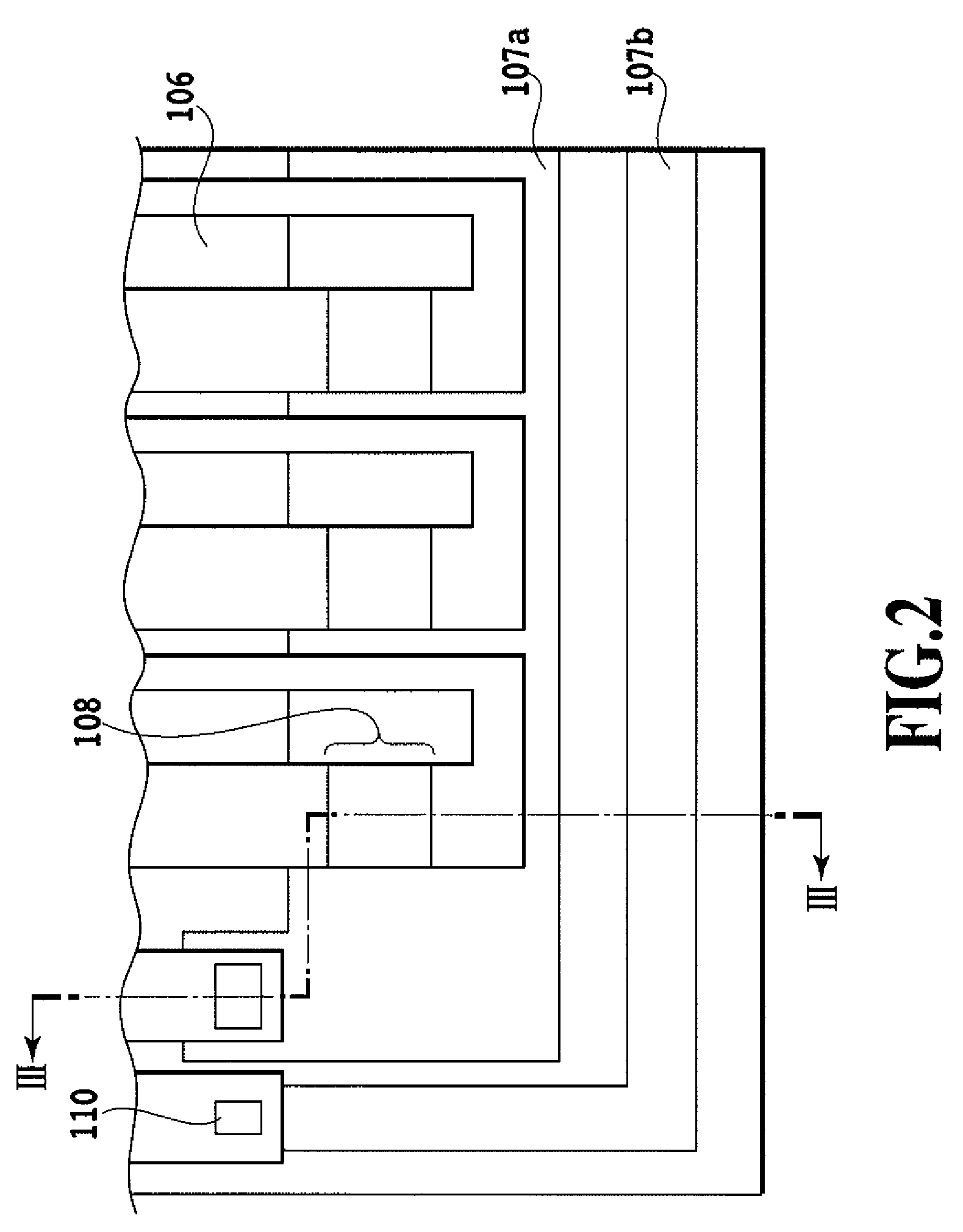Circuit board for ink jet head, ink jet head having the same, method for cleaning the head and ink jet printing apparatus using the head
a technology of ink jet printing and circuit board, which is applied in the direction of printing, inking apparatus, etc., can solve the problems of insufficient removal of kogations, inability to uniformly and reliably remove kogations, and increase the cost of ink or a limited number of dyes that can be used, so as to achieve reliable high-quality printing and reliably stabilize the characteristic of ink ejection
- Summary
- Abstract
- Description
- Claims
- Application Information
AI Technical Summary
Benefits of technology
Problems solved by technology
Method used
Image
Examples
first embodiment
2. First Embodiment
[0071]2.1 Construction of Ink Jet Head
[0072]FIG. 2 is a schematic plan view showing a heat application portion of the ink jet head circuit board (hereinafter simply referred to also as the circuit board) according to the first embodiment of this invention. FIG. 3 is a schematic cross-sectional view of the circuit board vertically cut along the line III-III of FIG. 2.
[0073]In FIG. 2 and FIG. 3, denoted 101 is a silicon substrate. Denoted 102 is a heat accumulating layer formed of a thermally oxidized film, SiO film or SiN film, 104 is a heating resistor layer, and 105 is an electrode wiring layer for wires formed of such metal materials as Al, Al—Si and Al—Cu. A heating portion 104′ as the electrothermal transducer is formed by removing a part of the electrode wiring layer 105 to form a gap and then exposing the heating resistor layer in that part. The electrode wiring layer 105 is connected to a drive element circuit or external power supply terminal (not shown) t...
example 1
[0105]Using a plurality of ink jet heads manufactured according to the process described above, kogation removing experiments were conducted. The experiments involve energizing the heating portion under a specified condition to deposit kogations on the heat application portion 108 and then applying a voltage to the upper protective layer 107 to remove the kogations. The ink used was BCI-6E M (Canon make).
[0106]First, a drive pulse with a magnitude of 20 V and a width of 1.5 μs was applied to the heating portion 5.0×106 times at a frequency of 5 kHz.
[0107]FIG. 12A schematically shows a state immediately after the application of the voltage. An impure substance K called a kogation was deposited nearly uniformly over the heat application portion 108, as shown in FIG. 12A. It was confirmed that performing a printing operation using the ink jet head in this state resulted in a poor print quality because of the deposited kogation K.
[0108]Next, a DC voltage of 10 V was applied to the exter...
example 2
[0112]Next, in the same process as the example 1 except that the upper protective layer 107 was formed of Ru, a plurality of ink jet heads of example 2 were manufactured and subjected to the same kogation removing experiment as described above. The kogation removing experiment was conducted by energizing the ink jet head under the same condition as described above, observing the kogation deposit state and the print quality before and after the kogation removing operation, and measuring the height difference between the pattern ends of the upper protective layer area 107a and the adhesive layer 109.
[0113]It was verified that the kogation on the heat application portion could be removed and the print quality recovered also when Ru was used for the upper protective layer 107 as in the case of Ir.
[0114]It is known that the dry etching is easily performed with Ru compared with Ir. So, Ru allows for an easy manufacture of the ink jet head circuit board.
[0115](Example for Comparison)
[0116]...
PUM
 Login to View More
Login to View More Abstract
Description
Claims
Application Information
 Login to View More
Login to View More - R&D
- Intellectual Property
- Life Sciences
- Materials
- Tech Scout
- Unparalleled Data Quality
- Higher Quality Content
- 60% Fewer Hallucinations
Browse by: Latest US Patents, China's latest patents, Technical Efficacy Thesaurus, Application Domain, Technology Topic, Popular Technical Reports.
© 2025 PatSnap. All rights reserved.Legal|Privacy policy|Modern Slavery Act Transparency Statement|Sitemap|About US| Contact US: help@patsnap.com



